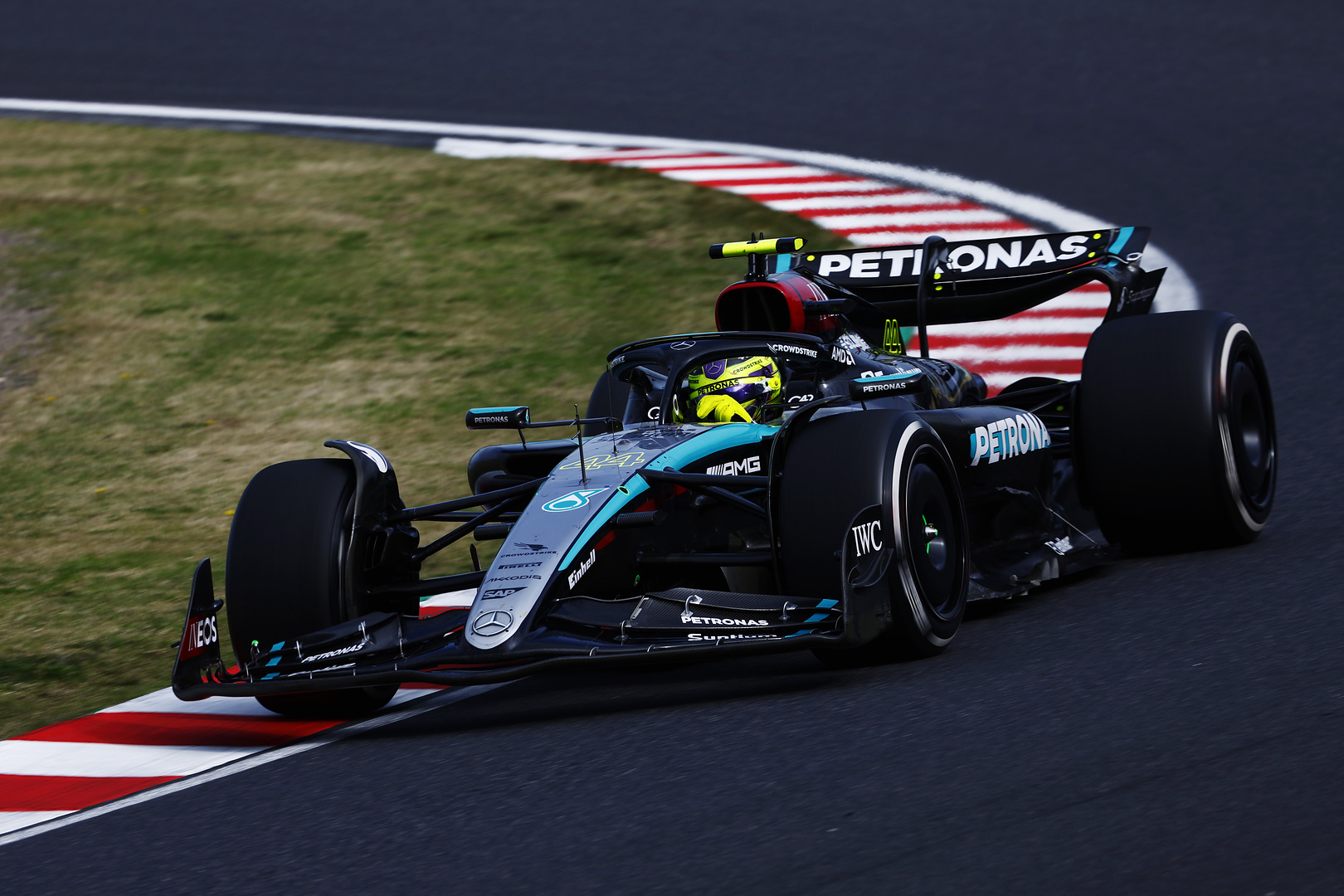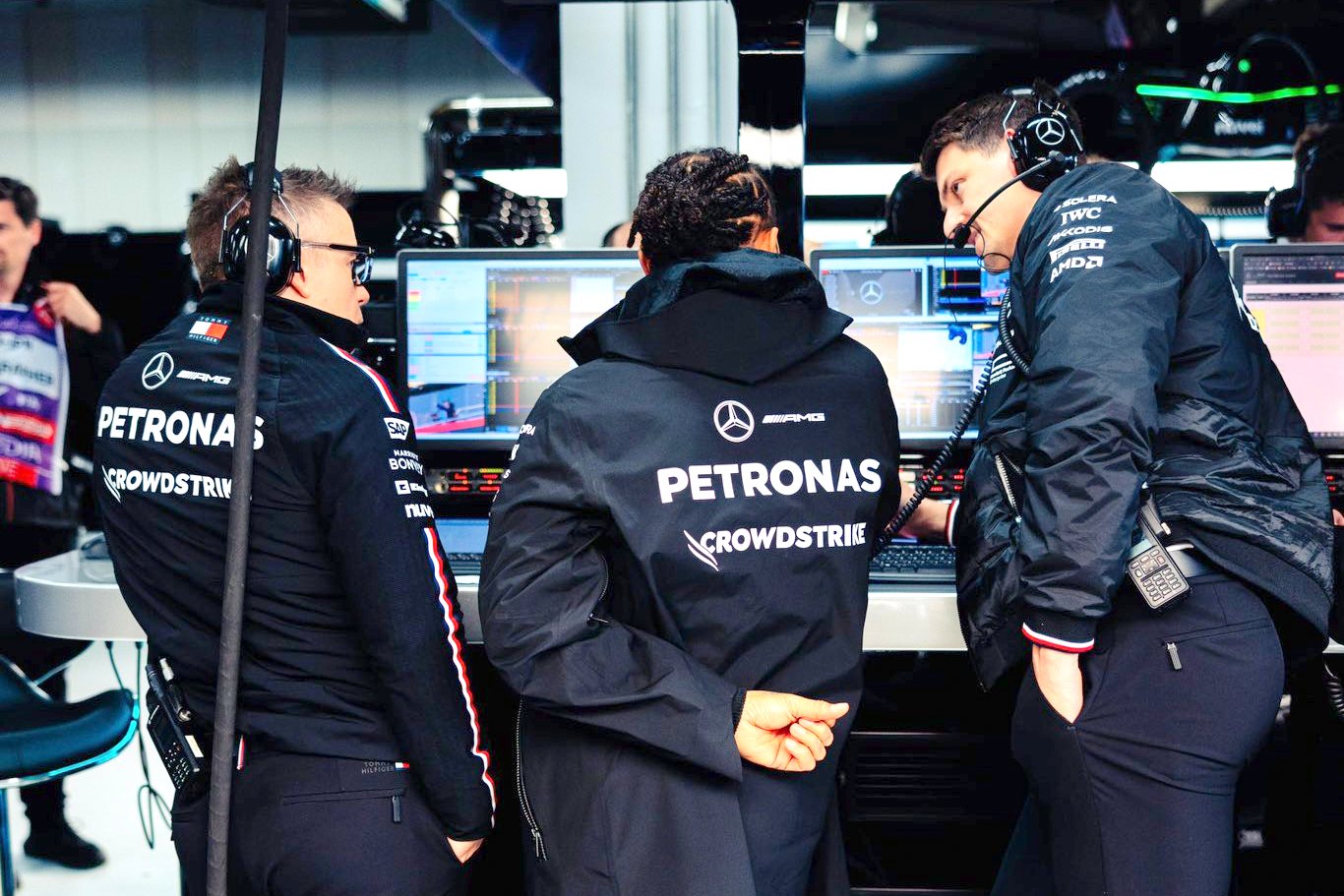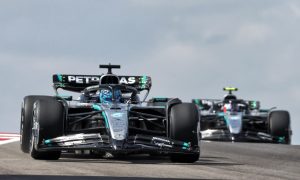
Mercedes admits it’s facing a head-scratching conundrum with its W15 F1 car whereby it is measuring indisputable aerodynamic gains but no performance benefit, a contradiction that “makes no sense” insists Toto Wolff.
Despite a complete design overhaul for 2024 and current wind tunnel data suggesting significant downforce improvements, Mercedes’ W15 is underperforming, particularly in high-speed corners, leaving the Brackley squad and its drivers frustrated.
The team’s initial investigation focused on a disconnect between predicted downforce from wind tunnel and CFD simulations and real-world performance.
Mercedes’ engineers have been hard at work, meticulously analyzing the phenomenon, searching for an aerodynamic explanation for the missing downforce.
However, a deeper dive into the W15’s data revealed an even more puzzling truth: the car appears to be generating the predicted downforce levels, but it isn't translating this benefit into improved performance.
Read also:
According to Wolff, this unexpected finding has shifted the team's focus from aerodynamics to potentially a mechanical issue that is undermining the W15’s performance and behaviour.
“We are measuring downforce with our sensors and pressure tabs, and it's saying to us that we have 70 points more downforce in a particular corner in Melbourne than we had last year,” Wolff explained.
“But, on the lap time, it is not one kilometre per hour faster. It doesn't make any sense. So, where's the limitation?
"I think we wanted to tick some few boxes to understand: is there any limitation that we have spotted? I think there is.”

©Mercedes
Pinpointing a probable cause for the weird discrepancy is a first important step, but solving the enigma is a complex affair insists Wolff.
“Everything over these two years which we have seen points that there should be much more downforce than we believe it is,” he said. “And now we've measured the downforce and it is there.
“But we're just not able to extract the lap time out of it that we should, and that the simulations show us. It's not trivial.”
The Austrian suggests that the key to unlocking W15’s potential lies in achieving a level of synergy between the W15's impressive aerodynamics and its mechanical setup.
Essentially, Mercedes needs to ensure that their car can handle the downforce their design generates effectively.

©Mercedes
Such a high level of mechanical and aero harmony is believed to be the very foundation on which Red Bull has built its success with its cars since the advent of the ground-effect era in F1 in 2022.
“I think that the car is so complex for us, where we put it in terms of the aero balance and mechanical balance,” added Wolff.
“These two need to correlate, and we've followed a certain trajectory over the last years. We kept turning in circles, and we came to a point to say, ‘okay, we've got to do something different here.’”
Keep up to date with all the F1 news via Facebook and Twitter







